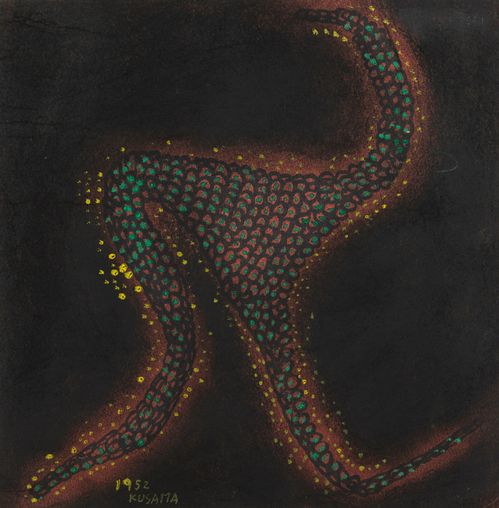Yayoi Kusama was born in 1929 in Matsumoto, Japan, the youngest of three siblings. She grew up in a conservative family that earned its living through a seed nursery. From an early age, she developed a passion for art, filling her sketchbooks with drawings of flowers. She attended Kamata Elementary School and Matsumoto First Girls’ High School in her hometown. When Japan entered the Second World War in 1941, schoolchildren were drafted to sew parachutes and uniforms in a textile factory. Despite these difficult circumstances, Kusama continued her artistic practice. As a teenager, she participated in open competitions and exhibited her work at the Zen-Shinshū Regional Art Exhibition in Nagano in 1945 and 1946.
In 1948, Kusama’s parents gave in to her wish to study traditional Japanese painting (Nihonga) at the Kyoto Municipal School of Arts and Crafts. At the same time, she pursued self-directed studies of Western art movements and was inspired by Surrealism. In the early 1950s, she produced more than 200 works on paper, experimenting with a variety of techniques in drawing and painting, including watercolor, ink, pastel, gouache, and tempera. The two works Untitled (1952) and Speurim (1953) also date from this period. They depict organic forms from flora and fauna, covered in a network of colorful dots. The so-called polka dots, which Kusama had been painting since her early childhood, later became her trademark.
